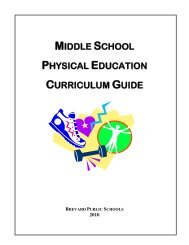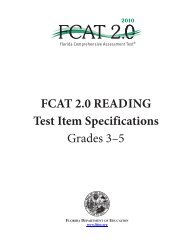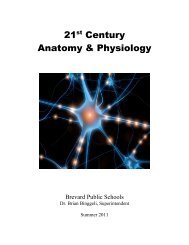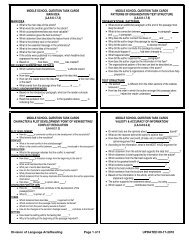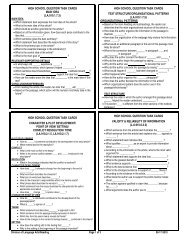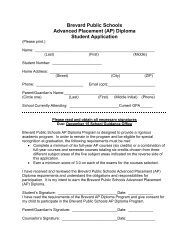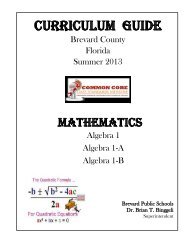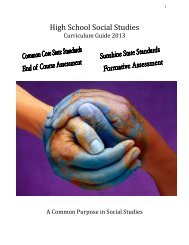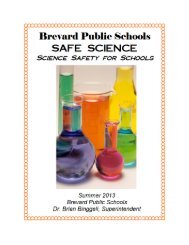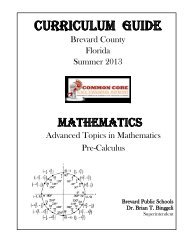Science Research Program Guide - Secondary Programs Home ...
Science Research Program Guide - Secondary Programs Home ...
Science Research Program Guide - Secondary Programs Home ...
Create successful ePaper yourself
Turn your PDF publications into a flip-book with our unique Google optimized e-Paper software.
decision-making limitations, and hypothesis testing strengths and weaknesses. Some of the<br />
most common statistical methods are the t test, F test, chi-square test, ANOVA, correlation<br />
tests, and regression analyses.<br />
It is critical that the statistical test be determined before the research begins. In fact, the<br />
statistical methodology actually plays an important role in determining the research design<br />
of the project. If the data collected is treated with a statistical test that is incompatible with the<br />
research design, the results of the statistical test would be nonsensical, essentially invalidating<br />
the conclusions. Data treated with the correct statistical methodology could lead to a wellsupported<br />
conclusion and a significantly strengthened project.<br />
Several excellent statistical software programs are available. It is suggested that the teacher<br />
encourage the students to become proficient at running statistical tests with either simulated or<br />
published data.<br />
It is essential that students understand the specific objectives, assumptions and<br />
applications of commonly used statistical tests.<br />
<strong>Research</strong> Plan Approval<br />
Once the research design and specific procedure has been written, the <strong>Research</strong> Plan, Form 1,<br />
Form IA, and Form IB should be completed and submitted to the science research teacher for<br />
approval. Any project that involves human, vertebrate animals, potentially hazardous<br />
biological agents, or hazardous chemicals activities and devices (See form I, item 6) may<br />
not be implemented until the Fair Director has granted approval for the <strong>Research</strong> Plan. .<br />
A “risk” assessment (Form 3) must be completed before presenting plan to Fair Director<br />
(additional forms might include Form 2, Form 3, Form 4, Form 5A, Form 5B, Form 6A<br />
and Form 6B).<br />
Prior to the protocol submission, the teacher must ensure that the student has also completed all<br />
other pertinent forms (Refer to International Fair Rules) required for final project approval.<br />
Procuring Supplies, Equipment, and Facilities<br />
After the science projects have been officially approved, the teacher should now begin to order<br />
supplies and equipment. Additionally, the teacher may need to arrange off campus<br />
laboratory/field activities for specific students. Often, a mentor will be involved in such<br />
activities.<br />
Timing is critical in this phase of the research. Obviously, if a student needs to grow wheat<br />
plants for 10 weeks, ordering the seeds 10 weeks before the competition date makes no sense.<br />
Common supplies such as light bulbs, jars, and styrofoam may be purchased at local vendors<br />
by the teachers, parents, or students.<br />
10



